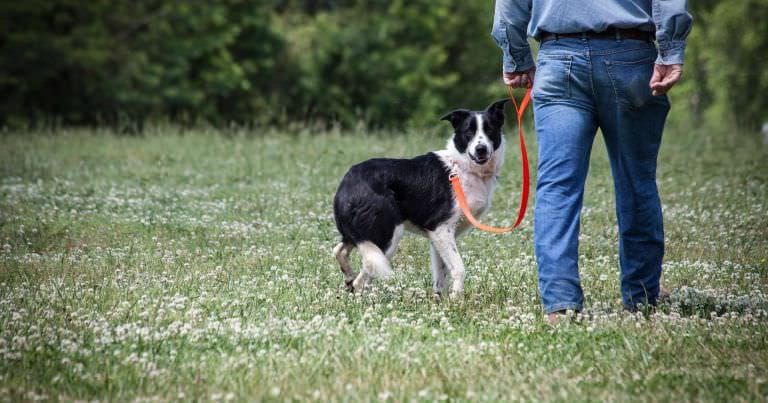One of the common questions I get asked is:
How do I get my distracted dog’s attention?
When training our distracted dogs to give attention and perform a new behaviour on cue, there are several basic principles to consider for an efficient and effective training program.
These include the environment where we choose to train, what we use for a reward, the criteria or level at which we work our dogs and more.
Over this series of articles, we will consider each of these in more detail, discussing common problems and how we can best change our training plans to help our dogs. The first one we will cover is the environment and how we can use it to our advantage and avoid common pitfalls.
The Environment: Wait! What’s happening over there?
We’ve all been there, calling our distracted dog as their attention is on another dog, and they head off into the sunset! When first training a behaviour, we must choose an environment with low distractions.
Therefore, it helps our dog’s attention on the task at hand and reduces the interruptions to the flow. It is best to achieve a quick rate of behaviour requested/performed/rewarded to promote efficient training.
When we accomplish this, our dogs find it easier to concentrate and remain motivated to keep the practice going. If we are training and our dog is distracted and lacks attention. It is our training plan that is the problem, not our dog.
The Three D’s: Helping our distracted dogs and maintaining their attention.
In training, we use the three D’s, Duration, Distance and Distractions, to raise our dogs’ criteria or difficulty level; we will look at the individual “D’s” in another article.
When training a new behaviour, it is best to only increase the level of one “D” at a time — the third “D” in our list, which is Distractions and is partly affected by the choice we make on where we start our training.
Therefore, to help our training go smoothly, we should choose somewhere with as few distractions (other people/dogs, sounds, movements, smells and so on) as possible. Like our living room or kitchen, this sets up our dogs for success by helping them focus on the training at that moment in time.
In Conclusion, How do I get my distracted dog’s attention?
Is, therefore, not what we should be asking if we are struggling to keep our distracted dog’s attention during training. Almost certainly, our training plan needs adjusting. Take training back into an environment where our dogs can focus and build up. Set everyone up for successful progression.
Name recognition and automatic focus are my go-to behaviours to train to build attention from an easily distracted dog.



